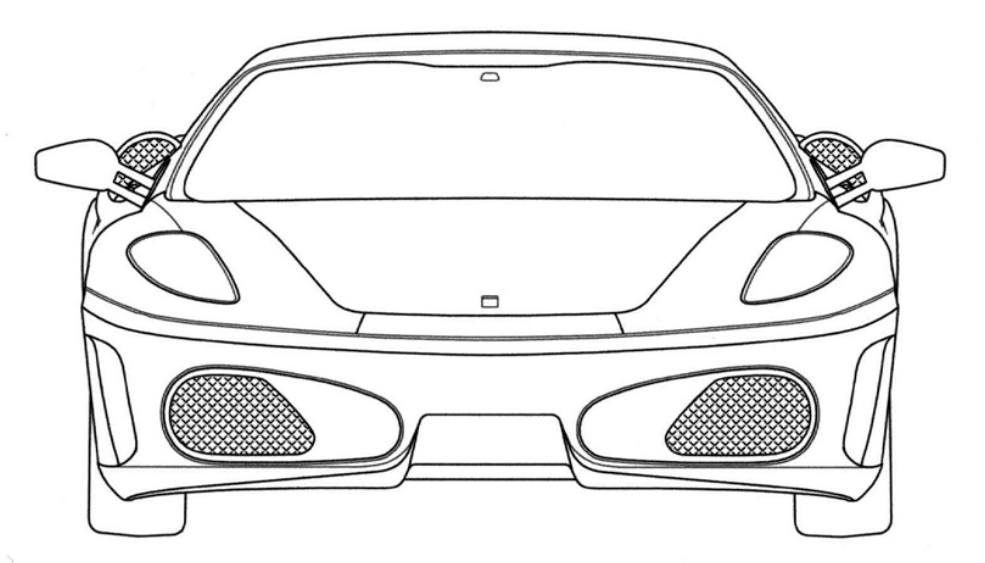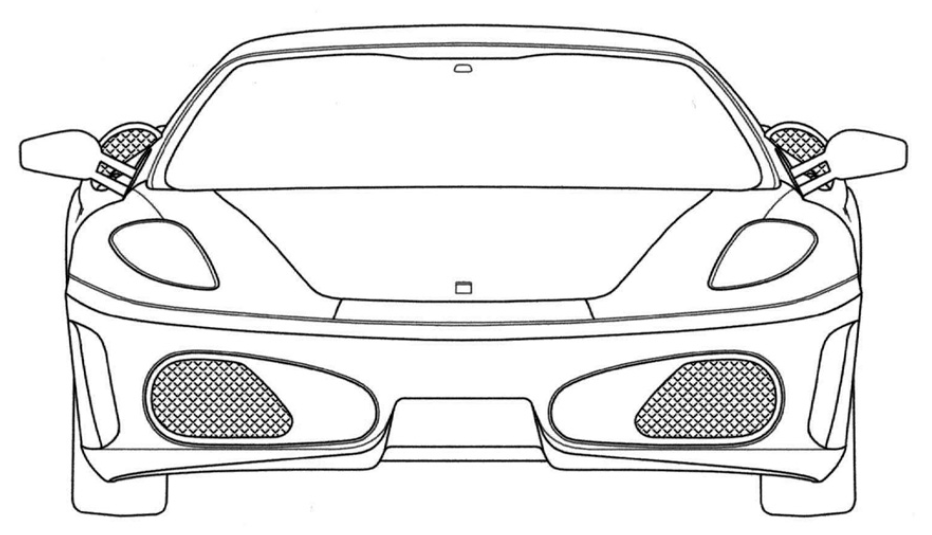F1's legal races off–track: Spanish trade mark cases as the 2025 season revs up
As the 2025 Formula 1 season kicks off, fans worldwide watch with bated breath: will Lando Norris finally become World Champion? Will the Constructors’ Championship be as fiercely contested as last season? In this unpredictable sport, anything is possible—even Alonso bringing home that elusive 33rd win. Yet beneath the roar of engines and cheering crowds of this multibillion-euro spectacle, another fierce competition rages—one less visible but equally crucial to F1’s success: the battle for the protection of intangible assets. This article explores three intriguing European Union trade mark (EUTM) infringement and invalidity cases from the past decade, which prove that, in the world of high-speed motorsports, intellectual property rights are anything but a pit stop.
Formula One Licensing B.V. vs. Grupo One Air Aviación, S.L. (2016)
Our first legal race takes us to the very heart of the competition. Formula One Licensing B.V., the entity responsible for managing and safeguarding F1's intellectual property rights, has actively enforced its trade mark rights on multiple occasions—both by opposing the registration of conflicting marks and by taking action against third-party infringers attempting to exploit the competition's renown. With over 20 validly registered EUTMs and 15 Spanish trade marks in force, the company has been particularly proactive in opposing third-party trade mark registrations at the EUIPO this year. However, the case we are about to analyse is the most recent trade mark infringement judgment involving Formula 1 in Spain, which dates back to 2016.
Invoked Signs | Contested Sign | |
F1 |
|  / F1 / F1 |
EUTM No. 009250721 | EUTM No. 003934387 | Spanish trade mark No. 2945203 |
Formula One Licensing invoked two of its EUTMs for F1, a word and a figurative mark, against Grupo Air Aviación. The dispute centred on the registration and use of the defendant’s mixed mark for services in Class 41, including aviator training and organizing sports vehicle events. In the first instance, upon comparison with the defendant’s mark, the Court found: (1) significant similarity of visual elements—both marks featured an ‘F’ and a ‘1’ in a trompe l'œil within a geometric shape; (2) insignificant colour differences; and (3) insufficient secondary elements—the smaller characters and the word ‘AIR’ in the defendant's sign. These findings, together with the Court’s recognition of the reputation of the F1 EUTMs, led the Court to determine a likelihood of association, meaning the relevant public might associate the defendant's mark with the F1 EUTMs, even without direct confusion. This resulted in the invalidation of the Spanish trade mark and the declaration that Grupo Air Aviación’s use constituted infringement of Formula One Licensing's well-known F1’s EUTMs. The defendant was ordered to cease use of the mark and pay compensation. On appeal, the EUTM Court of Second Instance in Spain (8th Section of the Court of Appeal of Alicante), in Judgment No. 1274/2016 dated 12 May 2016 (ECLI:ES:APA:2016:1274), re-analysed the marks and upheld the initial judgment, reaffirming the reinforced protection of Formula One Licensing’s well-known F1 EUTMs.
Ferrari S.p.A. vs. anonymous individual (2022)
Continuing with the Grand Prix of the Courts, we are going to analyse the most recent infringement action brought by a Formula 1 team in Spain. It involves precisely one of the most famous ones, Scuderia Ferrari, behind which is the company Ferrari S.p.A. It is worth mentioning that, in its eagerness to protect what is perhaps one of the most recognisable brands in the world, Ferrari S.p.A has approximately 100 registered EUTMS in force.
Invoked Signs | ||
|
| FERRARI |
EUTM No. 00161984 | EUTM No. 000162099 | EUTM No. 000448605 |
|
|
|
EUTM No. 003720571 | Community design No. 000216650 | Community designs No. 000303169-0001 and 000303169-0002 |
In a remarkable case from 2022, Ferrari S.p.A. pursued legal action against an individual who was transforming and marketing mid-range vehicles into unauthorised replicas of its Ferrari F430 model. Ferrari invoked several of its EUTMs, figurative and word marks, as well as its registered Community designs for the F430 model. The Court of First Instance found that the defendant's activities infringed both Ferrari's EUTMs and registered designs, as the replicas bore signs identical or similar to Ferrari's EUTMs and reproduced the registered designs of the F430. Consequently, the Court ordered the defendant to cease any use of Ferrari's trade marks and registered design, to destroy the infringing products at his own expense—including vehicles seized and which were the property of third-parties—and to compensate Ferrari for damages, with the amount to be determined in the enforcement phase. The defendant appealed, contesting the destruction order and the indemnification without a specified calculation basis; however, the EUTM Court of Second Instance in Spain dismissed the appeal and upheld the initial judgment in Judgment No. 1307/2022 dated 25 October 2022 (ECLI:ES:APA:2022:2662). This is because the Court considered that there was no good faith on the part of the third-parties who acquired the vehicles and because the basis for calculating the compensation (the infringer's profit) had indeed been correctly established in the statement of claim.
Hamilton International AG vs. 44IP Limited (2023)
As we navigate the final bend of our legal circuit, our focus shifts to the drivers' sphere, zeroing in on Lewis Hamilton, the seven-time World Champion. Renowned not only for his dominance on the track but also for his ventures beyond it, Hamilton's name has accelerated into the fast lane of intellectual property disputes. 44IP Limited, the entity managing Lewis Hamilton’s intellectual property rights, has 18 registered EUTMs in force, reflecting the driver’s efforts to protect his personal brand. However, the case we are going to analyse is one from the recent 2023 season in which the driver lost the race.
Invoked Sign | Contested Sign |
HAMILTON | LEWIS HAMILTON |
EUTM No. 013496013 |
In 2015, 44IP Limited applied to register the EUTM 'LEWIS HAMILTON' for various goods and services, including Classes 14 and 35—mainly precious metals, jewellery and clocks, and the services related with their sale. However, Hamilton International AG (a Swiss watch company) opposed the registration, invoking its earlier EUTM 'HAMILTON' registered for identical or similar goods in Class 14. The Opposition Division of the EUIPO upheld the opposition, finding a likelihood of confusion between the marks. Upon appeal, the First Board of Appeal confirmed the decision in 2023 (Case R 336/2022-1), dismissing the appeal entirely. The Board concluded that, at the time of the application in 2015, Lewis Hamilton was not universally known across the entire EU. While he was a famous Formula 1 driver in countries like the United Kingdom, Germany, Spain, France, and Italy, his recognition was not established in other EU countries such as Bulgaria, Estonia, Croatia, Latvia, and Lithuania. A lack of concrete evidence demonstrating his fame in these countries was noted. The Board found at least an average degree of visual and aural similarity between the signs. Conceptually, both signs refer to a person with the surname 'Hamilton'. Thus, the Board held that the shared surname could lead consumers to believe that the marks are connected, especially since 'Hamilton' in the contested mark might be perceived as indicating a common commercial origin. Although one might question whether the Board fully recognised the extent of Lewis Hamilton's fame within the EU, the Board's decision hinged on the evidence provided by 44IP Limited to demonstrate the driver’s fame across the EU. The outcome of this third and last case highlights the significant impact that insufficient proof of the reputation of a trade mark can have on intellectual property disputes.
Conclusion
As the 2025 F1 season shifts into high gear, it's clear that the race off the track is just as pivotal as the one on it. Those who steer their legal strategies with precision are the ones who will ultimately take the chequered flag in the competitive world of trade mark protection. The cases analysed demonstrate that in a sport where branding and reputation are as valuable as pole position, safeguarding intellectual property rights ensures constructors and drivers stay ahead of the pack. Brief, as Carlos Sainz takes an unexpected pit stop at Williams, perhaps it's a timely reminder that adaptability, both on the track and in legal strategy, is key to crossing the finish line first. After all, Formula 1 is not just about speed—it's about keeping your foot on the accelerator in every aspect of the race.






 ,
,


